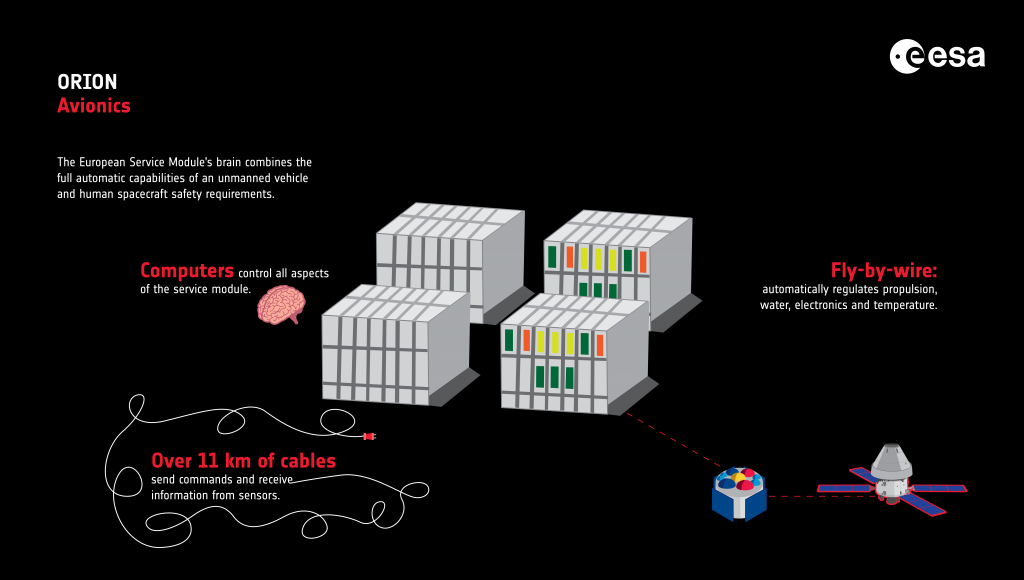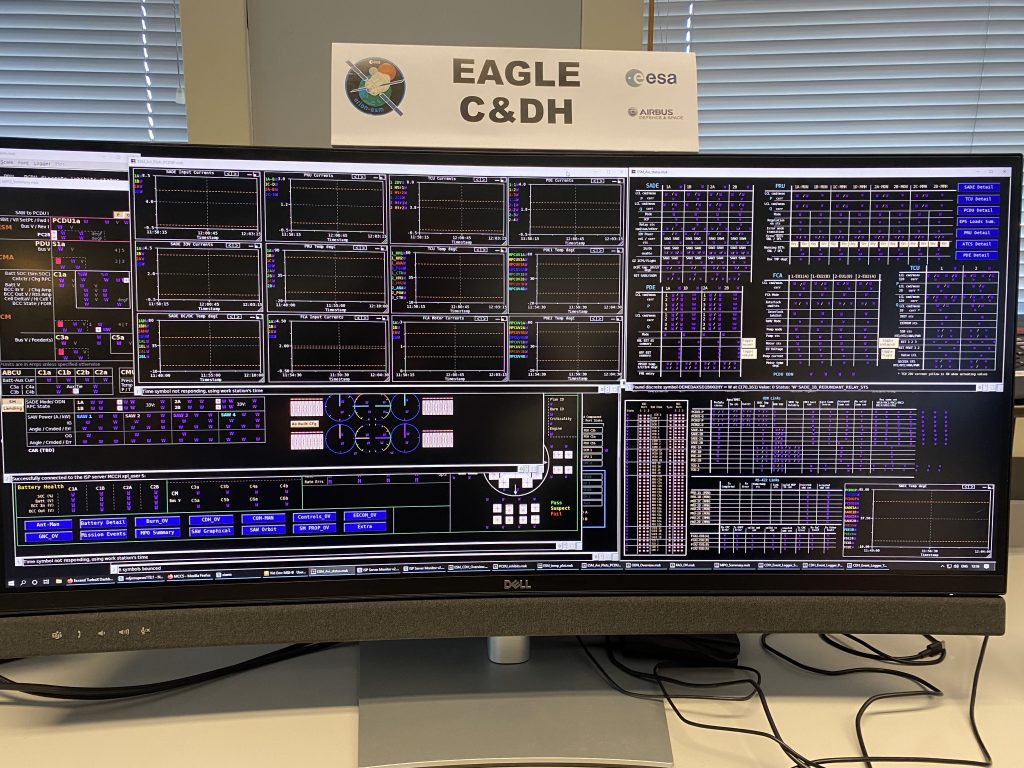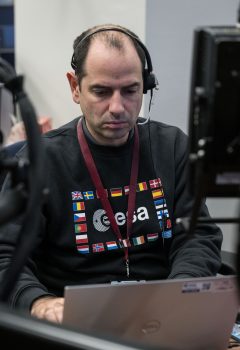In this series of blog entries, we are going to deep dive into the subsystems that engineers in the Mission Evaluation Room monitor and advise on during an Artemis mission – as explained by the people on console themselves.
C&DH stands for Command and Data Handling but on the European Service Module the scope is enlarged to encompass the whole avionics, the service modules “brain”. The people behind this console are monitoring the commands sent and the reactions to them as well as the whole network used by the European Service Module.

Electronics doctors, the people behind this console are concerned about the health of the spacecraft’s electronic equipment. They have many displays to choose from and each engineer can arrange their windows as they wish, but in this screenshot the main parameters to watch are in the top right.

Clockwise from the top in the window we have the Pressure Regulation Units, the Temperature Control Units, Flight Controller Application, Propulsion Drive Electronics and the Solar Array Drive Electronics.
Generally, there are two modes to keep into account: standby or active, and the controller on console will be monitoring if the commands to be active are received correctly and executed as planned.
The bottom right window gives the low-down on the health of the communications and data handling of the European Service Module. Three connected networks are monitored, the communications network from Earth, the on-board data network that exists in the European Service Module itself and the RS-422 signals, a robust and industry-standard system to send electronic commands to hardware.
Bottom left is half-concealed window on battery levels, and above that is a more detailed view on the voltage levels going to the main components as seen on the window to the right.
In this photo there is no (simulated) data visible, but it gives an idea of what the flight controllers see when practising or actually flying the Orion spacecraft.
Testing for success

The key tool for the avionics controller is the BIT, or Built-In Test. This data is similar to a ping for networks, a quick back and forth to assure that the connections are sound and the hardware is awake and standby ready for commands.
Like with most operations rooms, if everything is going as it should there is not much to do but constantly monitor the readings to ensure everything is behaving well – and be ready at all times to react for anything out of the ordinary.
There is an added element for the European Service Modules teams explains Luca Fossati, command and data handling controller: “The tricky thing with ESM is we are running three elements of production at the same time.
“As we developed the second and third service modules, we were testing the first module and also practicing flight operations in Mission Evaluation Room simulations, never a boring day!”

 Automated Transfer Vehicle page
Automated Transfer Vehicle page ATV blog archive
ATV blog archive
Discussion: 3 comments
Dear Julien.
If something has to be repaired during a manned mission (micro meteorite impact?), will the crew be able to get out of Orion (EVA) and try to perform an inspection/reparation? In this case, will that only be possible for the outer parts of the ESM?
Thanks
There is no airlock on Orion so direct spacewalks are not possible in its current configuration, however once docked to the lunar Gateway astronauts could exit through the Gateway’s airlock and inspect Orion.
Not during stand-alone flight, but when docked to the Gateway a spacewalk could be foreseen via the Gateway’s airlock